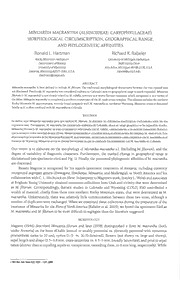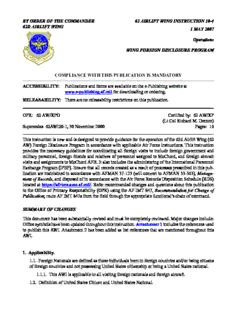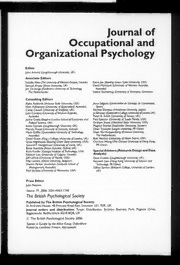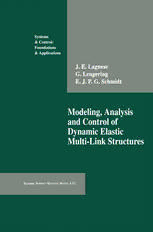
Modeling, Analysis and Control of Dynamic Elastic Multi-Link Structures PDF
Preview Modeling, Analysis and Control of Dynamic Elastic Multi-Link Structures
Systems & Control: Foundations & Applications Series Editor Christopher I. Byrnes, Washington University Associate Editors S. -I. Amari, University of Tokyo B.D.O. Anderson, Australian National University, Canberra Karl Johan Astrom, Lund Institute of Technology, Sweden Jean-Pierre Aubin, EDOMADE, Paris H.T. Banks, North Carolina State University, Raleigh John S. Baras, University of Maryland, College Park A. Bensoussan, INRIA, Paris John Bums, Virginia Polytechnic Institute, Blacksburg Han-Fu Chen, Academia Sinica, Beijing M.H.A. Davis, Imperial College of Science and Technology, London Wendell Fleming, Brown University, Providence, Rhode Island Michel Fliess, CNRS-ESE, Gif-sur-Yvette, France Keith Glover, University of Cambridge, England Diederich Hinrichsen, University of Bremen, Germany Alberto Isidori, University of Rome B. Jakubczyk, Polish Academy of Sciences, Warsaw Hidenori Kimura, University of Osaka Arthur J. Krener, University of California, Davis H. Kunita, Kyushu University, Japan Alexander Kurzhanski, Russian Academy of Sciences, Moscow Harold J. Kushner, Brown University, Providence, Rhode Island Anders Lindquist, Royal Institute of Technology, Stockholm Andrzej Manitius, George Mason University, Fairfax, Virginia Clyde F. Martin, Texas Tech University, Lubbock, Texas Sanjoy K. Mitter, Massachusetts Institute of Technology, Cambridge Giorgio Picci, University of Padova, Italy Boris Pshenichnyj, Glushkov Institute of Cybernetics, Kiev HJ. Sussman, Rutgers University, New Brunswick, New Jersey TJ. Tam, Washington University, St. Louis, Missouri V.M. Tikhomirov, Institute for Problems in Mechanics, Moscow Pravin P. Varaiya, University of California, Berkeley Jan C. Willems, University of Gronigen, The Netherlands W.M. Wonham, University of Toronto J. E. Lagnese Giinter Leugering J. E. P. G. Schmidt Modeling, Analysis and Control of Dynamic Elastic Multi-Link Structures Springer Science+Business Media, LLC J. E. Lagnese Giinter Leugering Department of Mathematics FakuItăt fiir Mathematik und Physik Georgetown University University of Bayreuth ne Washington, 20057, USA D-W 8580 Bayreuth, Germany E. J. P. G. Schmidt Dept. of Mathematics and Statistics McGill University Montreal. Canada H3A 2K6 Library of Congress Cataloging-in-Publication Data Lagnese, J. Modelling, analysis, and control of dynamic elastic multi-link struetures I J. E. Lagnese, Giinter Leugering, E. J. P. G. Sehmidl. p. em. -- (Systems & control) Includes bibliographieal references and index. ISBN 978-1-4612-6689-1 ISBN 978-1-4612-0273-8 (eBook) DOI 10.1007/978-1-4612-0273-8 1. Aexible struetures--Mathematieal models. 2. Distributed parameter systems--Mathematical models. 3. Elastic analysis (Engineering) 1. Leugering, Giinter, 1953- . II. Schmidt, E. J. P. G., 1940- . III. Title. IV. Series. TA660.F53L34 1994 94-3096 624.1'7 --dc20 CIP Printed on acid-free paper © Springer Science+Business Media New York 1994 Originally published by Birkhăuser Boston in 1994 Softcover reprint of the hardcover 1 st edition 1994 Copyright is not claimed for works ofU.S. Govemment employees. AII rights reserved. No part ofthis publication may be reproduced, stored in a retrieval system, or transmilled, in any form or by any means, electronic, mechanical, photocopying, recording, or otherwise, without prior permission of the copyright owner. Permission to photocopy for internal or personal use of specific clients is granted by Springer Science+Business Media, LLC for libraries and other users registered with the Copyright Clearance Center (CCC), provided that the base fee of$6.00 per copy, plus $0.20 per page is paid direct1y to CCC, 222 Rosewood Drive, Danvers, MA 01923, V.S.A. Special requests should be addressed direct1y to Springer Science+Business Media, LLC V.S.A. ISBN 978-1-4612-6689-1 Typeset by the authors. 9 8 7 6 5 432 1 Contents List of Figures xi Preface xiii Chapter I. Introduction 1 1. General Overview 1 2. On the Contents of the Book 6 Chapter II. Modeling of Networks of Elastic Strings 13 1. Modeling of Nonlinear Elastic Strings 13 2. Networks of Nonlinear Elastic Strings 16 3. Linearization 19 4. Well-posedness of the Network Equations 23 5. Controllability of Networks of Elastic Strings 33 5.1. Exact Controllability of Tree Networks 36 5.2. Lack of Controllability for Networks with Closed Circuits 40 6. Stabilizability of String Networks 42 7. String Networks with Masses at the Nodes 44 Chapter III. Networks of Thermoelastic Beams 47 1. Modeling of a Thin Thermoelastic Curved Beam 47 2. The Equations of Motion 60 2.1. Some Remarks on Warping and Torsion 66 3. Rotating Beams 67 3.1. Dynamic Stiffening 70 vi CONTENTS 4. Straight, Untwisted, Nonshearable Nonlinear 3-d Beams 71 4.1. Approximation-Generalizations 74 5. Straight, Untwisted Shearable Linear 3-d Beams 76 6. Shearable Nonlinear 2-d Beams with Curvature 77 6.1. Approximation-Generalizations 79 7. A List of Beam Models 80 Damping 82 8. Networks of Beams 83 8.1. Geometric Joint Conditions 83 8.1.1. Rigid Joints 8.1.2. Pinned Joints 8.2. Dynamic Joint Conditions 85 8.2.1. Rigid Joints 8.2.2. Pinned Joints 9. Rotating Two-link Flexible Nonlinear Shearable Beams 89 Chapter IV. A General Hyperbolic Model for Networks 95 1. The General Model 95 2. Some Special Cases 99 2.1. String Networks 99 2.2. Networks of Planar Timoshenko Beams 99 2.4. Networks of Initially Curved Bresse Beams 102 2.5. Beams and Strings 102 3. Existence and Regularity of Solutions 105 4. Energy Estimates for Hyperbolic Systems 111 5. Exact Controllability of the Network Model. 119 6. Stabilizability of the Network Model. 123 Chapter V. Spectral Analysis and Numerical Simulations 135 1. Preliminaries 135 1.1. Notation 136 1.2. Networks of Strings 138 1.3. Networks of Timoshenko Beams 139 1.4. Networks of Euler-Bernoulli Beams 140 CONTENTS vii 2. Eigenvalue Problems for Networks of I-d Elements 142 2.1. Introduction 142 2.2. General String Networks 143 2.3. Homogeneous String Networks 147 2.3.1. Examples 2.4. Networks of Timoshenko Beams 156 2.4.1. The Case Where A = 0 2.4.2. The Case Where A Belongs to an Individual Beam 2.4.3. Eigenvalues for the Entire Graph 2.5. Homogeneous Timoshenko Networks 165 3. Numerical Simulations of Controlled I-d Networks 167 3.1. Introductory Remarks 167 3.2. Networks of Strings 168 3.2.1. Absorbing Controls 3.2.2. Directing Controls 4. Finite Element Approximations of Timoshenko Networks 183 5. Implicit Runge-Kutta Method: Dry Friction at Joints 191 Chapter VI. Interconnected Membranes 201 1. Modeling of Dynamic Nonlinear Elastic Membranes 202 1.1. Equations of Motion 203 1.2. Edge Conditions 204 1.3. Hamilton's Principle 204 2. Systems of Interconnected Elastic Membranes 206 2.1. Geometric Junction Conditions 207 2.2. Dynamic Conditions 208 2.3. Linearization 212 2.4. Well-Posedness of the Linear Model 213 3. Controllability of Linked Isotropic Membranes 221 3.1. Observability Estimates for the Homogeneous Problem 223 3.2. A Priori Estimates for Serially Connected Membranes 238 3.3. A Priori Estimates for Single Jointed Membrane Systems 241 3.4. The Reachable States 243 3.4.1. Serially Connected Membranes 3.4.2. Membrane Transmission Problems Chapter VII. Systems of Linked Plates 251 1. Modeling of Dynamic Nonlinear Elastic Plates 252 1.1. Equations of Motion 253 1.2. Edge Conditions 256 1.3. Hamilton's Principle 257 1.4. Additional Kinematic and Material Assumptions 259 1.5. Rotations Associated with Plate Deformation 264 viii CONTENTS 2. Linearization 266 2.1. Linearization of Equations of Motion 266 2.2. Linearization of Edge Conditions 269 2.3. Hamilton's Principle for the Reissner Model 270 2.4. Linearization of the Vector Rotation Angle 270 2.5. The Kirchhoff Plate Model 272 3. Systems of Linked Reissner Plates 273 3.1. Geometric Junction Conditions 274 3.2. Linearization of the Geometric Joint Conditions 275 3.3. Dynamic Joint Conditions 277 3.3.1. Dynamic conditions at a connected joint 3.3.2. Dynamic conditions at a hinged joint 3.3.3. Dynamic conditions at a semi-rigid joint 3.3.4. Dynamic conditions at a rigid joint 3.4. Junctions With Masses and Applied Forces 283 3.4.1. Dynamic conditions at a connected joint 3.4.2. Dynamic conditions at a hinged joint 3.4.3. Dynamic conditions at a semi-rigid joint 3.4.4. Dynamic conditions at a rigid joint 4. Well-posedness of Systems of Linked Reissner Plates 286 4.1. Function Spaces for Linked Plates 287 4.2. Existence and Uniqueness of Solutions 289 5. Controllability of Linked Reissner Plates 292 5.1. Controllability in Transmission Problems for Thin Plates 293 5.1.1. Observability Estimates and Consequences 6. Systems of Linked Kirchhoff Plates 304 6.1. Semi-rigid Joints 305 6.1.1. Interpretation of Theorem 6.1 6.2. Proof of Theorem 6.1 313 6.3. Connected, Hinged or Rigid Joints 315 Chapter VIII. Plate-Beam Systems 319 1. Introduction 319 2. Modeling of the Plate-Beam Junction: I 321 2.1. Geometric Conditions 321 2.2. Dynamic conditions 325 3. Function Spaces and Well-Posedness 330 4. The Reachable Set 345 4.1. Observabilityestimates 346 4.2. Proofs of Theorems 4.1 and 4.2 362 CONTENTS ix 5. Limit Model as the Shear Moduli Approach Infinity 363 5.1. Interpretation of the Limit Model 369 6. Modeling of a Plate-Beam Junction: II 372 6.1. Geometric Conditions 372 6.2. Dynamic Conditions 373 Bibliography 379 Index 385 List of Figures V.1 Some eigenmodes of the unit square 151 V.2 Eigenvalues of unit square 152 V.3 Splitting of eigenvalues 153 V.4 Eigenvalues of a triangle 154 V.5 Splitting of the spectrum 154 V.6 A typical frame 155 V.7 Distribution of eigenvalues 156 V.8 Uncontrolled motion of a string 171 V.9 Contour plot 171 V.1O Conservation of energy 172 V.U Absorbing boundary control 172 V.12 Energy plot of disappearing solution 173 V.13 Case (a) 174 V.14 Case (b) 174 V.15 Transfer of energy through multiple joints 175 V.16 Directing controls 178 V.17 Energy of entire system 178 V.18 Effect of time delay 179 V.19 Instability due to time delay 180 V.20 Bang-bang control 181 V.21 Improved dissipation 181 V.22 Robustness of bang-bang control 182 V.23 Nonlinear dissipation with time delay 182 V.24 Energy in individual strings 184 V.25 Energy in 5th string and entire system 184 V.26 Directing controls 185 V.27 Directing controls 185 V.28 A comparison of controls 191 V.29 Unit square: uncontrolled motion 192
The list of books you might like

Rich Dad Poor Dad

$100m Offers

The Strength In Our Scars

The 5 Second Rule: Transform your Life, Work, and Confidence with Everyday Courage

Unambiguous pure state identification without classical knowledge
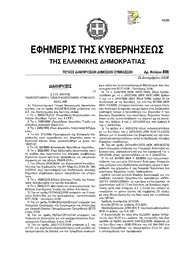
Greek Government Gazette: Part 7, 2006 no. 896

bölüm 12

Caracterización de capacidades

c - Alaska District

Healthcare operations management
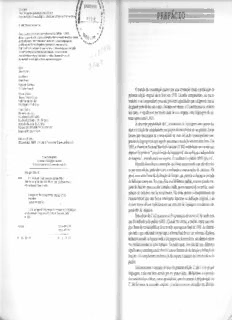
C: A linguagem de programação - Padrão Ansi
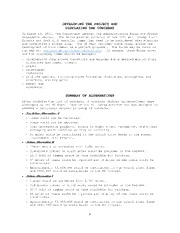
Three Creeks timber sale project final environmental impact statement
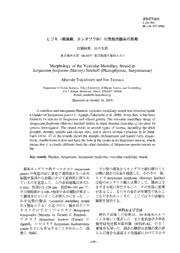
Morphology of the Vesicular Medullary Strand in Sargassum fusiforme (Harvey) Setchell (Phaeophyceae, Sargassaceae)
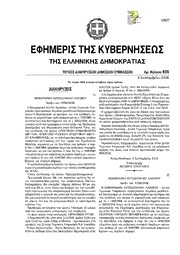
Greek Government Gazette: Part 7, 2006 no. 659
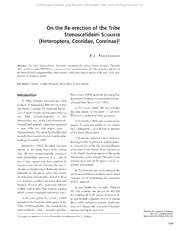
On the Re-erection of the Tribe Stenoscelideini SCHAEFER (Heteroptera, Coreidae, Coreinae)
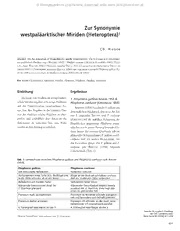
Zur Synonymie westpaläarktischer Miriden (Heteroptera)
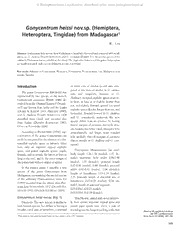
Gonycentrum heissi nov.sp. (Hemiptera, Heteroptera, Tingidae) from Madagascar
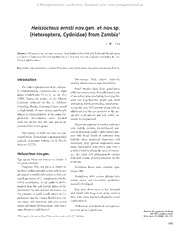
Heissocteus ernsti nov.gen. et nov.sp. (Heteroptera, Cydnidae) from Zambia

CADE MEF AT VFinal - Alfredo Thorne
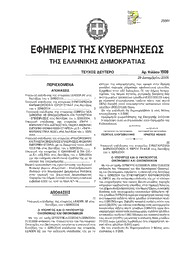
Greek Government Gazette: Part 2, 2006 no. 1908

